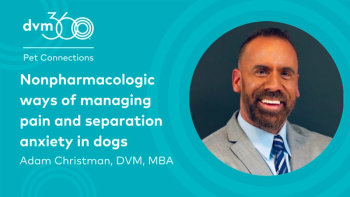- What do I value?
- How do I want to be remembered?
If these questions seem too philosophical or cumbersome right now, hone in on simple keywords that resonate as core values. “If you jot down those few words they can evolve into 1 or 2 sentences,” she said, offering her succinct purpose statement as an example:“I activate others to thrive.”
As you continue to develop a personal purpose statement, keep in mind that most are action-oriented. “It also helps to remind myself that they are fluid,” Cary added. “What I may think resonates today as my statement can evolve. You are not stuck in 1 thing.”
2. Leverage uniqueness to create value
One of the pivotal steps toward personal innovation is leveraging your attributes to create value for those around you. To explore this concept further, Cary instructed attendees to reflect on their unique assets.
“Start by writing down 3 unique attributes that resonate with you about yourself,” she said. In isolation, the words you choose may not necessarily seem unique—hardworking, upbeat, inquisitive—but what is most important is that they are personal.
Cary shared the journey of former University of Florida classmate Stephanie Jones, DVM, as an example of how to leverage uniqueness to create value. “What defines her is being extremely passionate about veterinary medicine and helping kids,” Cary explained. These are her unique assets. Jones combined those passions to launch Pets Help the Heart Heal, a nonprofit organization that aims to improve the physical, social, and emotional health of youth through the human-animal bond.
“I share this because it is such a good example of someone who has been able to tap into what makes them unique to add value to the world around them,” Cary said. “I’d love to encourage you to think about what makes you unique.”
3. Take risks
“I like to think of this in terms of failing fast, failing forward, and failing often, and then keep going,” Cary said. “We know the most successful innovators take calculated risks. They do their homework before they jump, but when they do jump, they are all in and they do not let failures or a series of failures deter them. They use those as learnings to fuel the next round.”
Regardless of the outcome, there are a plethora of benefits to taking risks. For starters, risk urges us to learn new skills and evolve existing skills, she said. “Taking a risk also boosts creativity and creative thinking, which we know is important in terms of having an innovative mindset.”
Whether it is immediately apparent or not, needing to make quick decisions helps to define clear objectives because there is no time to second guess yourself. “The fear of failure often gets obliterated when taking risks because we are always looking for the next thing to inspire us and we know there is always more to learn,” Cary explained.
Taking calculated risks often results in a positive trickle-down effect, too. To observers, the ability to bet on yourself and adopt an entrepreneurial mindset tends to inspire confidence.“Taking risks is also about being open to new ideas, new approaches, and new ways of thinking,” she added. With this mindset, new opportunities are uncovered.
4. Collaborate diversely
“You likely already recognize the benefits of being part of a network or community, and you know the power of collaboration,” Cary said. “But I encourage you to take a look at the people you spend the majority of your time with at home and work. Do they look, act, talk, and think like you? Do they come from similar backgrounds?” If so, it’s time to branch out.
Create SMART goals
The ideal way to achieve both external and internal goals is through the SMART format.
- Specific: Goals should be concise and aligned with your main objectives.
- Measurable: Create timelines or benchmarks to gauge your progress.
- Attainable: Ask yourself whether you can realistically complete your goal within the given timeframe.
- Relevant: There should be meaning behind every goal that links it to an overall business or personal objective.
- Time-bound: Set deadlines.
Making a concerted effort to collaborate with professionals from different economic, cultural, educational, and social backgrounds provides unique perspectives to problem-solving and creative thinking. For those looking to further strengthen this area of personal innovation, Cary recommends the work of social scientist Scott E. Page and, in particular, The Diversity Bonus: How Great Pay Off in the Knowledge Economy. His work provides evidence that teams composed of different kinds of thinkers outperform homogenous groups on complex tasks, producing what he calls diversity bonuses.
In addition to embracing the importance of diversity and inclusion in the workplace, Cary asked attendees to consider the people in their lives who influence and guide them. “One concept I like to expose people to, is the idea of a personal advisory board,” she said. Many veterinary professionals are involved in mentoring at some level, but by creating diverse and varied connections—your advisory board—you will have a variety of people with different mindsets you can turn to with questions or potential business ideas.
5. Embrace lifelong learning
Veterinary professionals are intrinsically involved in lifelong learning as a means of staying abreast of the new information and technology in the field. Whether through obtaining certifications, on-the-job training, or attending conferences, continuing education is not a foreign concept.
But here is the challenge, according to Cary: How do you fuel your intellect outside of veterinary medicine? Do you enjoy listening to podcasts, touring museums, or learning new languages? Aim to become more expansive in your learning, she said. If it has been a while since you engaged in one of your favorite activities, maybe that is 1 of the things you commit to doing next on your journey toward personal innovation, she suggested. “In doing so we may very well spark creative juices that in turn fuel new ideas that ultimately positively impact our work.”
Amanda Carrozza is a freelance writer and editor in New Jersey.





